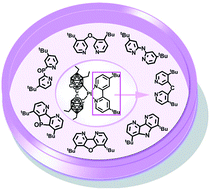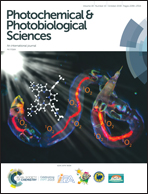Theoretical insights into the effect of ligands on platinum(ii) complexes with a bidentate bis(o-carborane) ligand structure†
Abstract
Carboranes feature a wealth of unique structures and properties in phosphorescent transition-metal complexes (PTMCs). Herein, we identify the influence between the electronic structure in carboranes and the main ligand based on the density functional theory (DFT) and time-dependent density functional theory (TD-DFT), which affects the phosphorescence properties of carborane-containing Pt compounds. Furthermore, the mechanism, including singlet–triplet splitting energies ΔE(Sn – T1), transition dipole moment for S0 – Sn transitions, the zero-field splitting (ZFS), the radiative decay rate constant (kr), the Huang–Rhys factor (S), and the spin–orbit coupling (SOC) matrix elements <T1|HSOC|Sn> have been carefully investigated. The results presented here reveal the functional action 1,1′-bis(o-carborane) contributes to the emission process owing to the manipulation of main ligand dtb-bpy and complex 1a shows promising prospects for achieving highly efficient phosphorescence via engineering the conjugation of the main ligand dtb-bpy.



 Please wait while we load your content...
Please wait while we load your content...